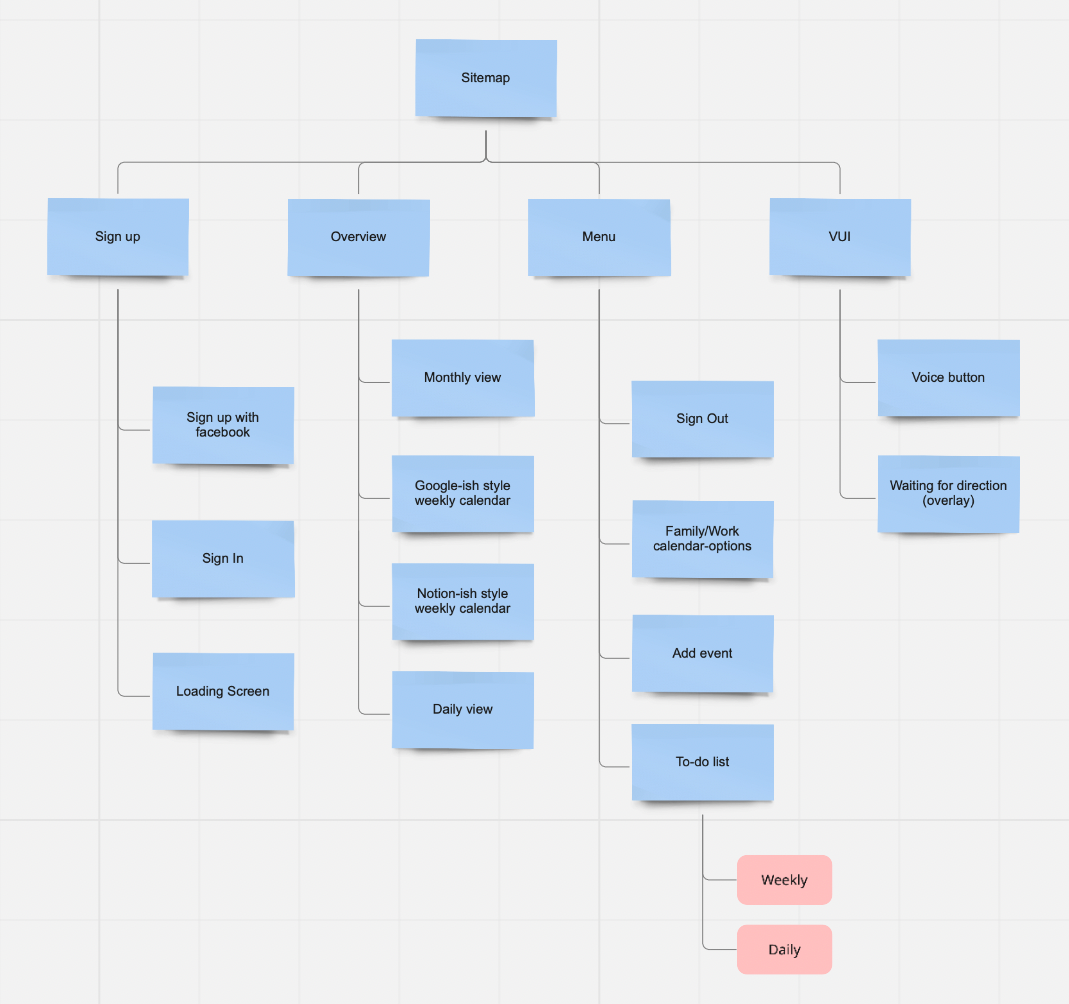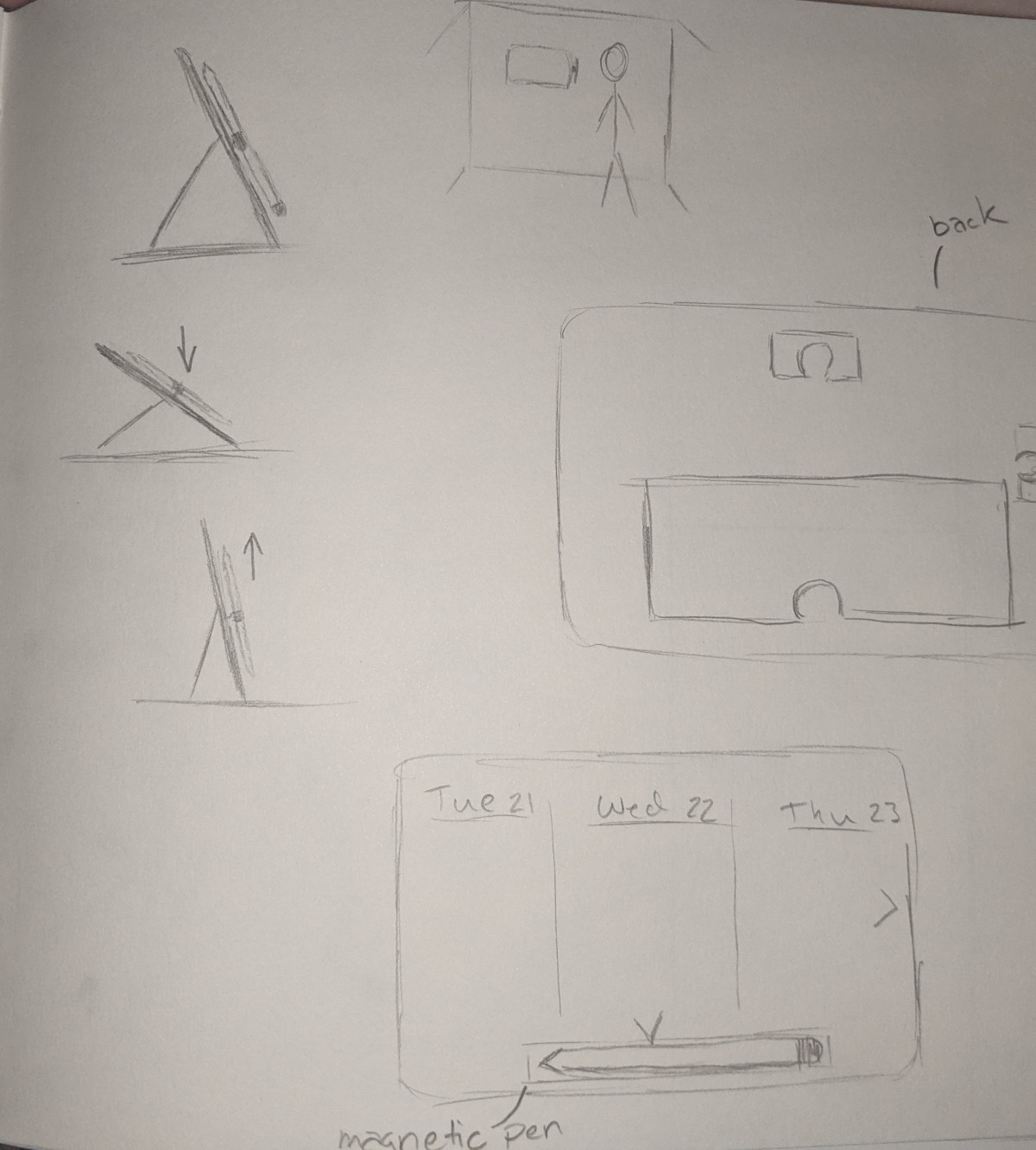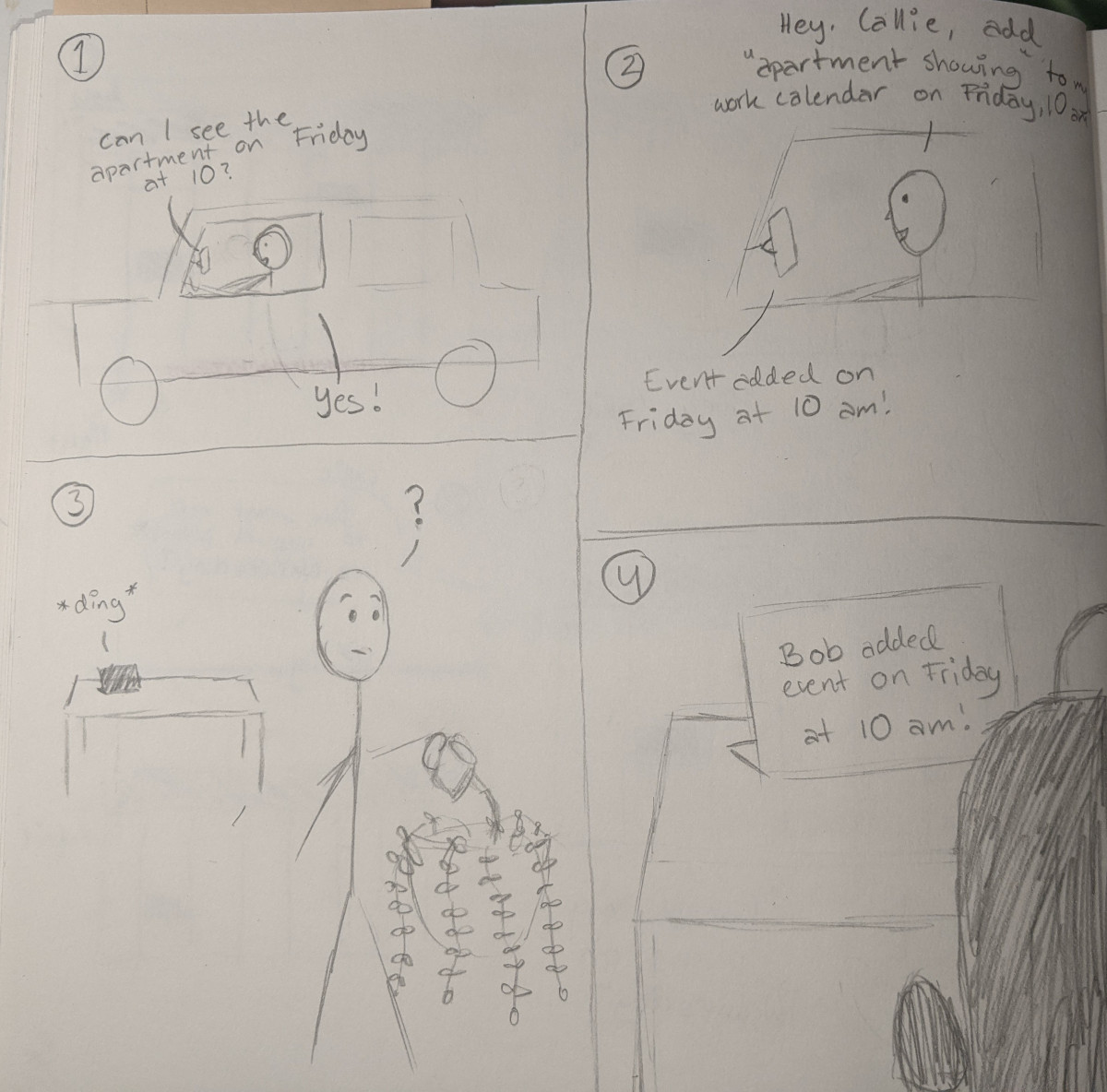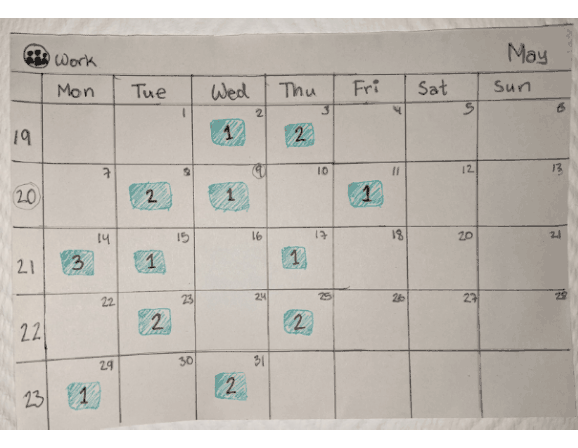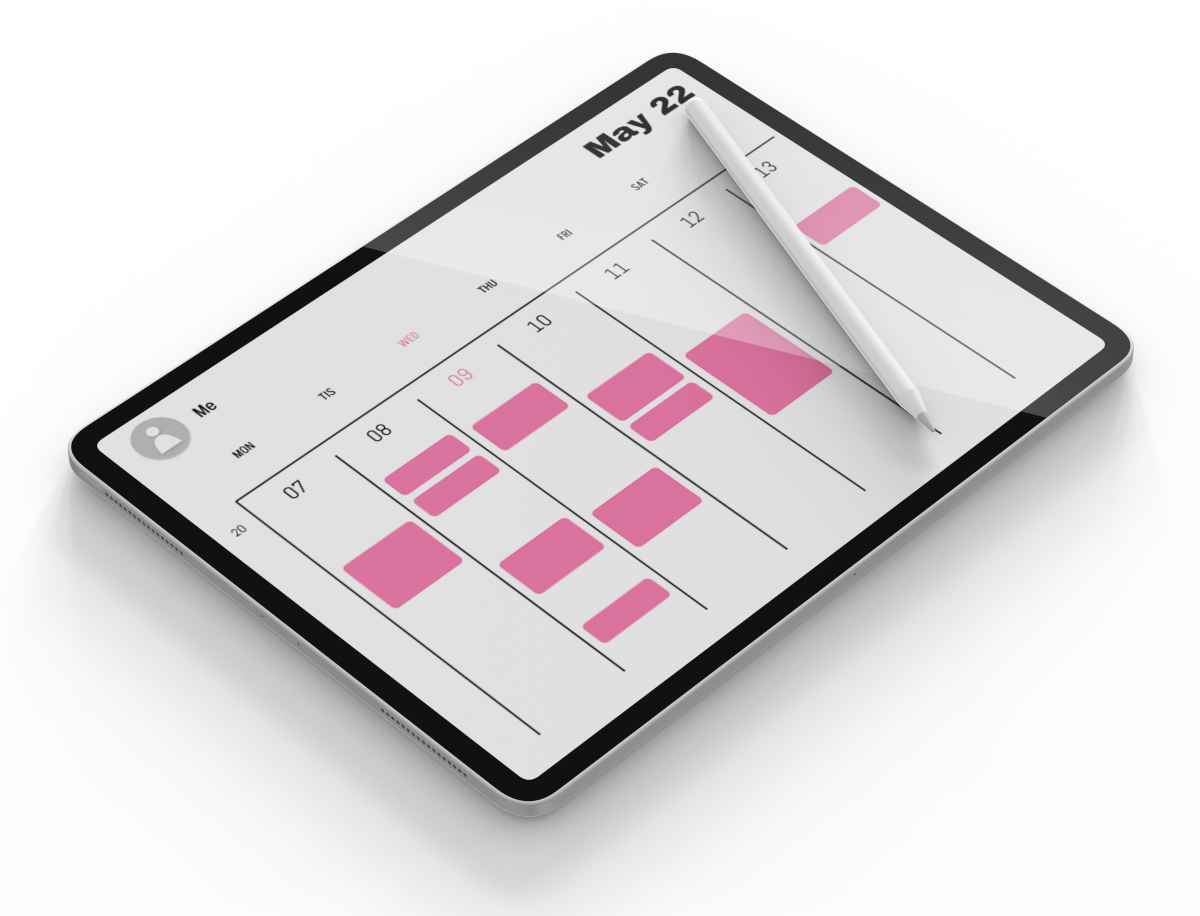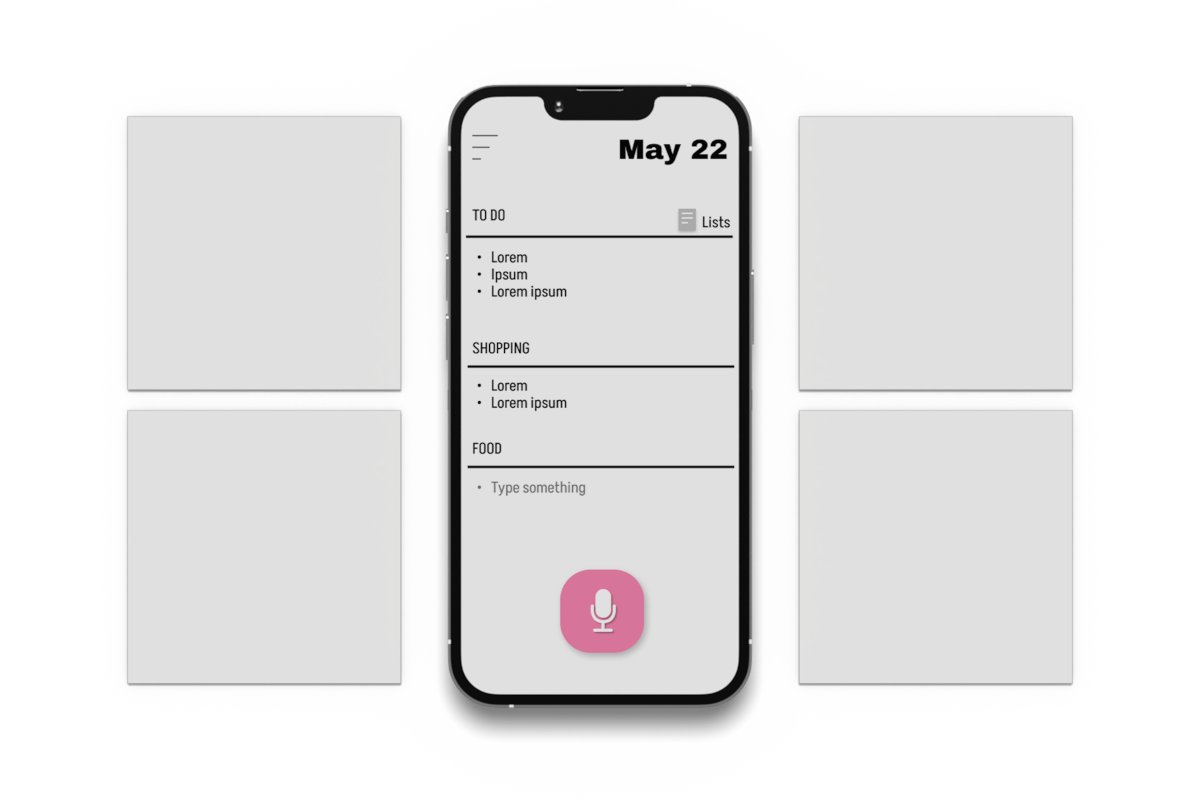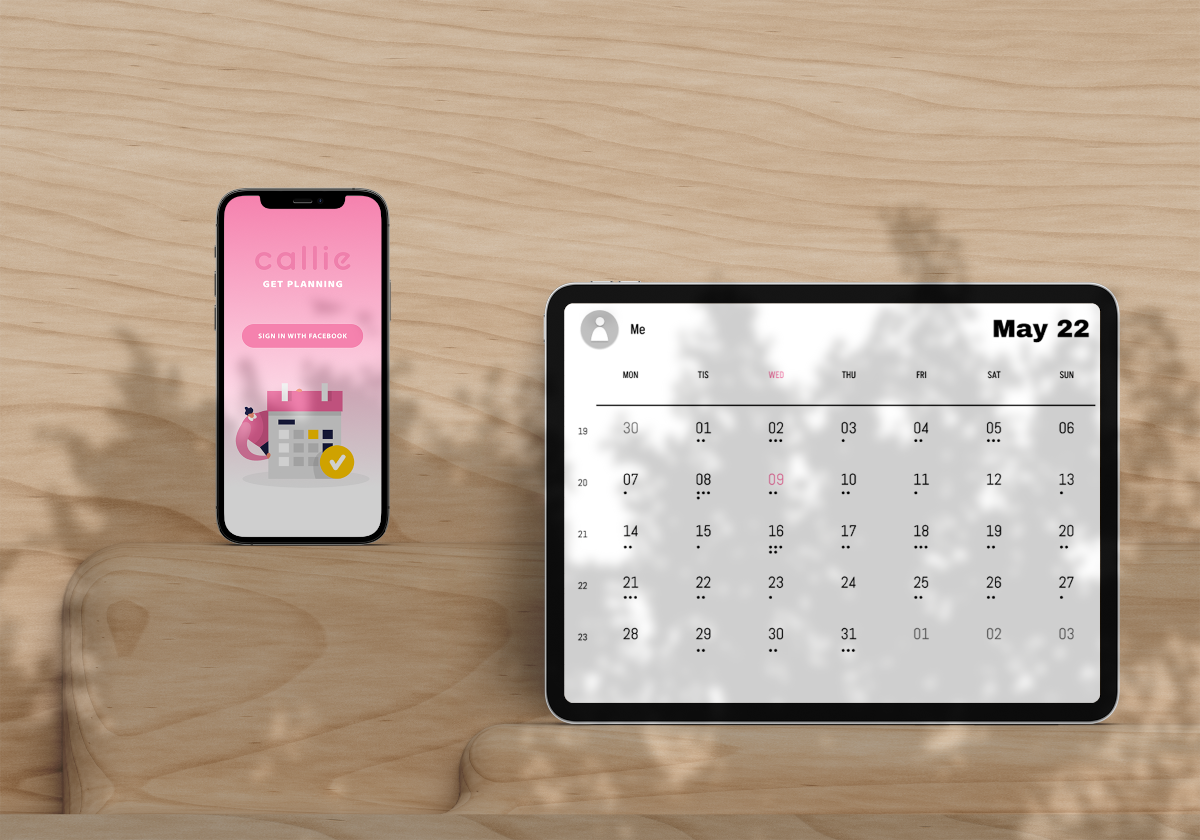PRODUCT DESIGN 2022
Callie
UI/UX, Academic
Solo Project
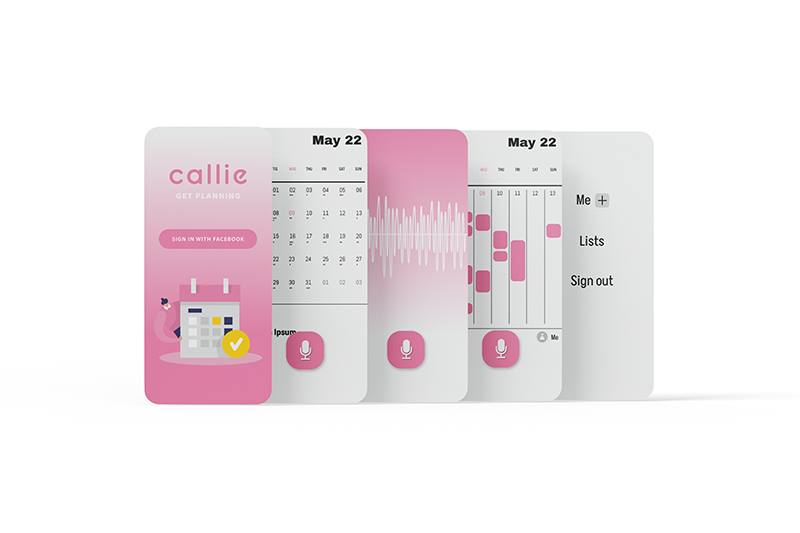
Details
Tools
Pen and Paper
Figma
Miro
Illustrator
Time Frame
3 weeks
Methods
Site Mapping
User Research
Digital Prototyping
Paper Prototyping
Storyboarding
Summary
Callie is a physical calendar that can be controlled with your voice, with a special pen or an app. Several calendars and by extension several households can be connected to each other to make collaborating on calendars easy.
Task
Task Description
The task was to design a digital artifact for a specific context of your choosing. The artifact had to support users in some way as well as relate to ubiquitous computing and social computing. In the chosen area, you were to create a design brief as a framework for the project and, based on that, carry out an ethnographic study. The purpose of the study was to describe the context, what people do in it and how technology is used, to have it serve as a baseline for the design work.
Time Frame
3 Weeks
The Problem
The context I chose to work with was family businesses, mainly focusing on reducing stress. The very first thing I did was some research of the context to create prior knowledge about what is classified as a family business and what can be interesting to look at and ask a potential user about.
Some common problems that family businesses often encounter include:
- Strained family relationships
- No separation of work culture and family culture
- A general lack of structure which in turn can create stress and strain on the family
User Research
A small ethnographic study was done on a person who works in a family business to gain a better understanding of the context and the culture within it. Methods used in the study were survey, observation and unstructured interview.
Most important points gathered
- The biggest stressors were about poor communication, lack of technical knowledge from the older people in the company and tense family relationships.
- He is often frustrated by the older generation's lack of computer knowledge in almost all aspects of the company; everything from digitizing documents to sending emails.
- He would appreciate an easier way to sync schedules with everyone in the company because communication currently does not work.
Something that was quite telling was that despite open questions to the user, pretty much all the problems that were discovered landed in the same points that I’d already read about in my earlier research.
“The task is to design a digital artifact that supports family businesses in their communication and/or work. The concept that is designed must be based on ubiquitous computing and be based on real users through some type of ethnographic study. The purpose of the design is to reduce some of the common problems that family businesses often face. The challenge will be to design something that attracts both younger and older target audiences since family businesses often have a wide age range.”
